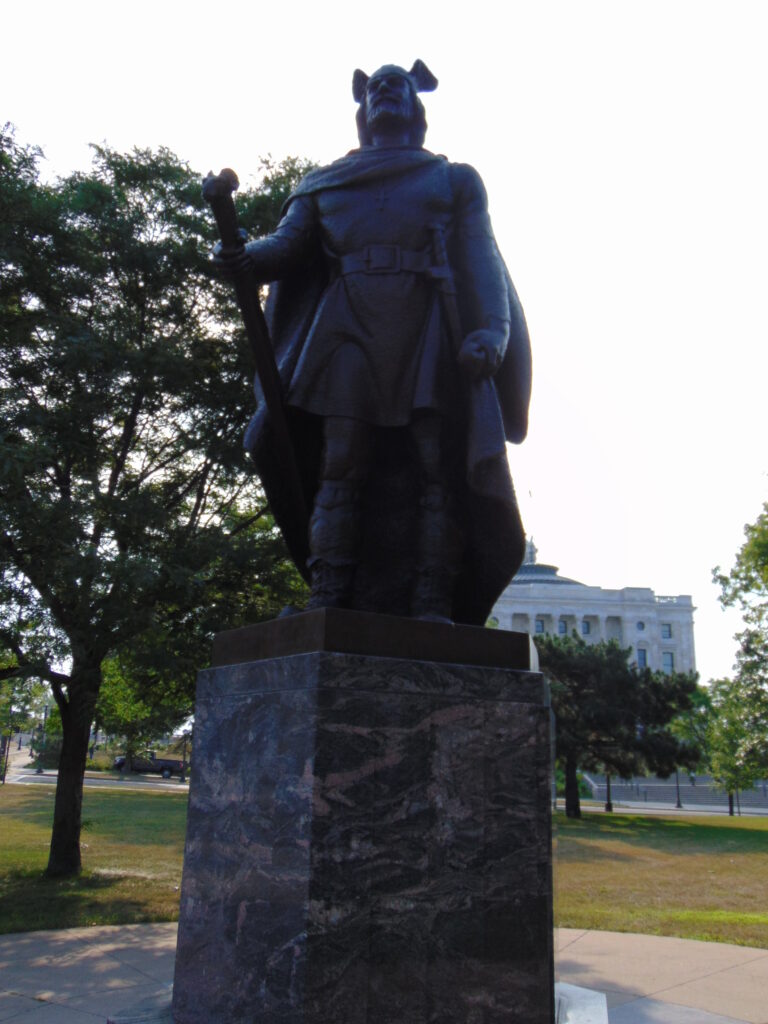Last week I visited the statue of Leif Erikson in St. Paul, MN. Leif is known for discovering North America around 1000 CE. His exploits are described in Grœnlendinga saga (The Saga of the Greenlanders) and Eiriks saga rauða (The Saga of Erik the Red).

I was interested in his hat. Look closely and you’ll see that it has wings. The wings reminded me of Hermes/Mercury’s winged helmet in Greco/Roman mythology. Mercury is known for having a winged helmet and/or shoes, which explains how he was able to travel so fast.
I’ve already written about the connection between skating and winged shoes. In a tenth-century manuscript of the Aeneid, Mercury’s winged shoes (talaria in Latin) are glossed by scritscos, the ancestor of the German word for ice skates (Gallée, 162). Variations on this term are also used to gloss the word petasus, which is a type of hat. Somehow it seems to have gotten mixed up with shoes, though, because Notker, a Benedictine monk whose writings represent the end of Old High German, wrote
Petasum héizent greci singulariter alatum calciamentum mercurii
(Petasum means, especially to the Greeks, the winged shoe of Mercury)
Piper 1882: I.701
Somehow Mercury’s winged clothing got mixed up with ice skates. That is how the Leif Erikson statue in St. Paul is connected to ice skating.
Update: Gordon Campbell has something to say about Leif’s hat:
In the second half of the nineteenth century, horned and winged helmets became the distinguishing feature of these Vikings of the imagination, all of whom were of course male. … The Norse wore helmets when conducting raids, but the helmets were smooth so that they could deflect a sword blow; a horned helmet would catch a sword blade, and allow the helmet (and the head) to be removed.
Campbell 2021, 26–27.
References
G. Campbell. 2021. Norse America: The Story of a Founding Myth. Oxford: Oxford University Press.
J. H. Gallée, ed. 1894. Old-Saxon Texts. Leiden: Brill.
P. Piper, ed. 1882. Die Schriften Notkers und seiner Schule. Freiburg: Mohr

